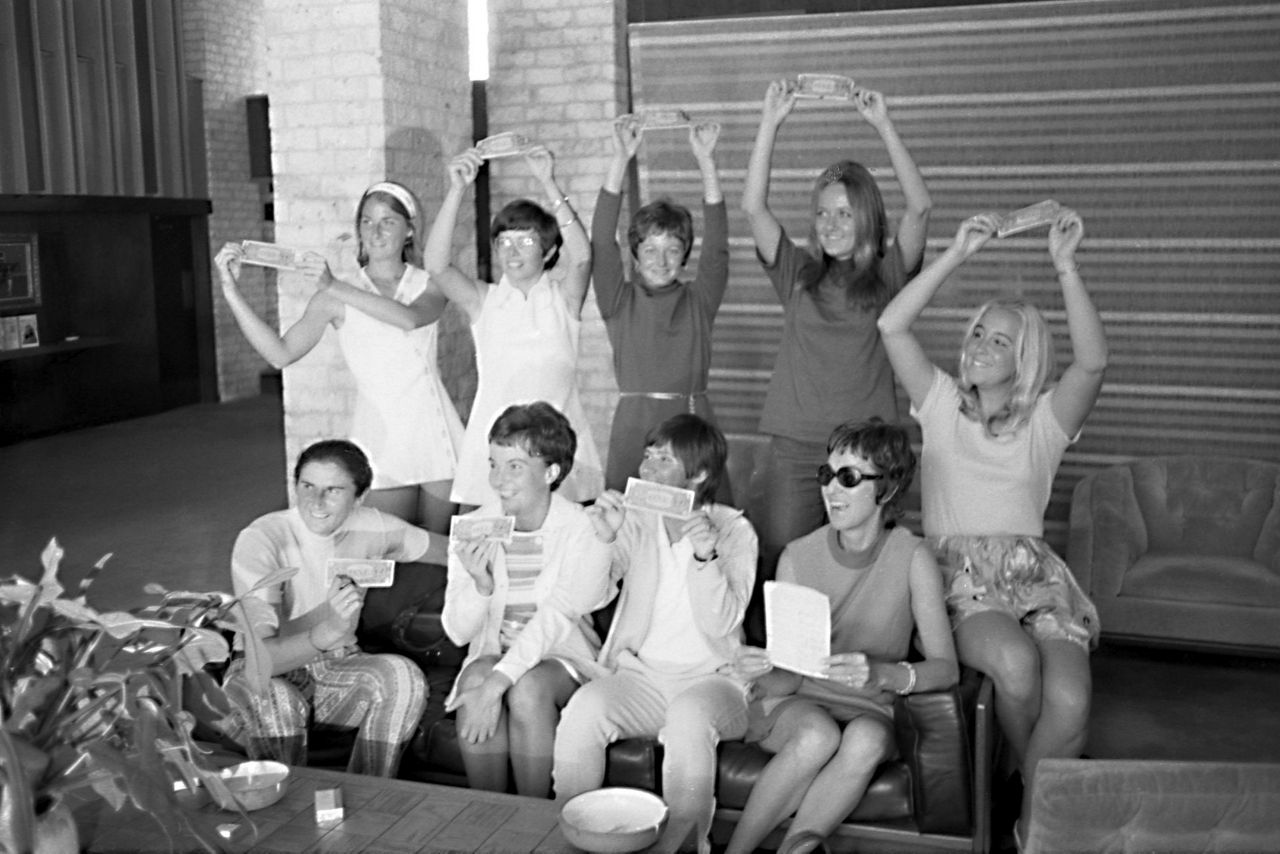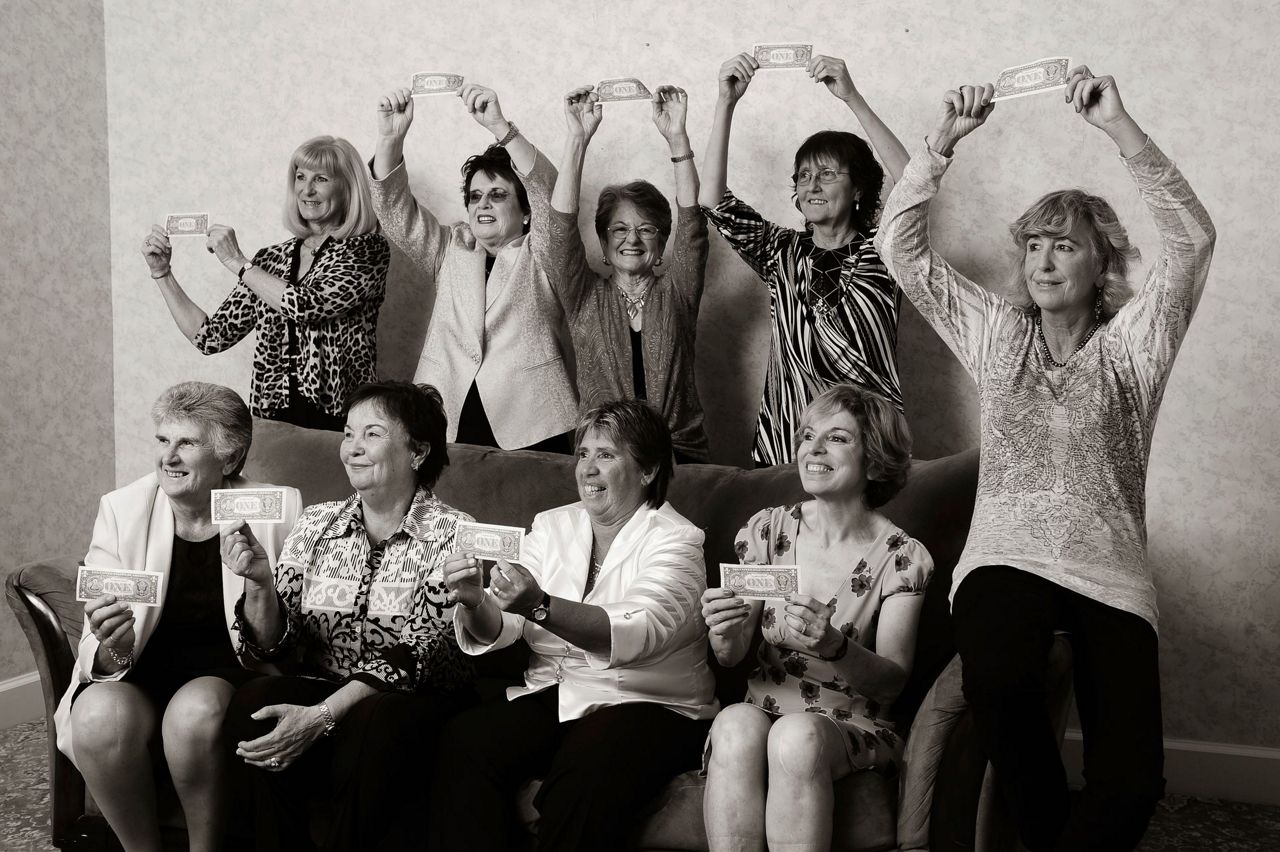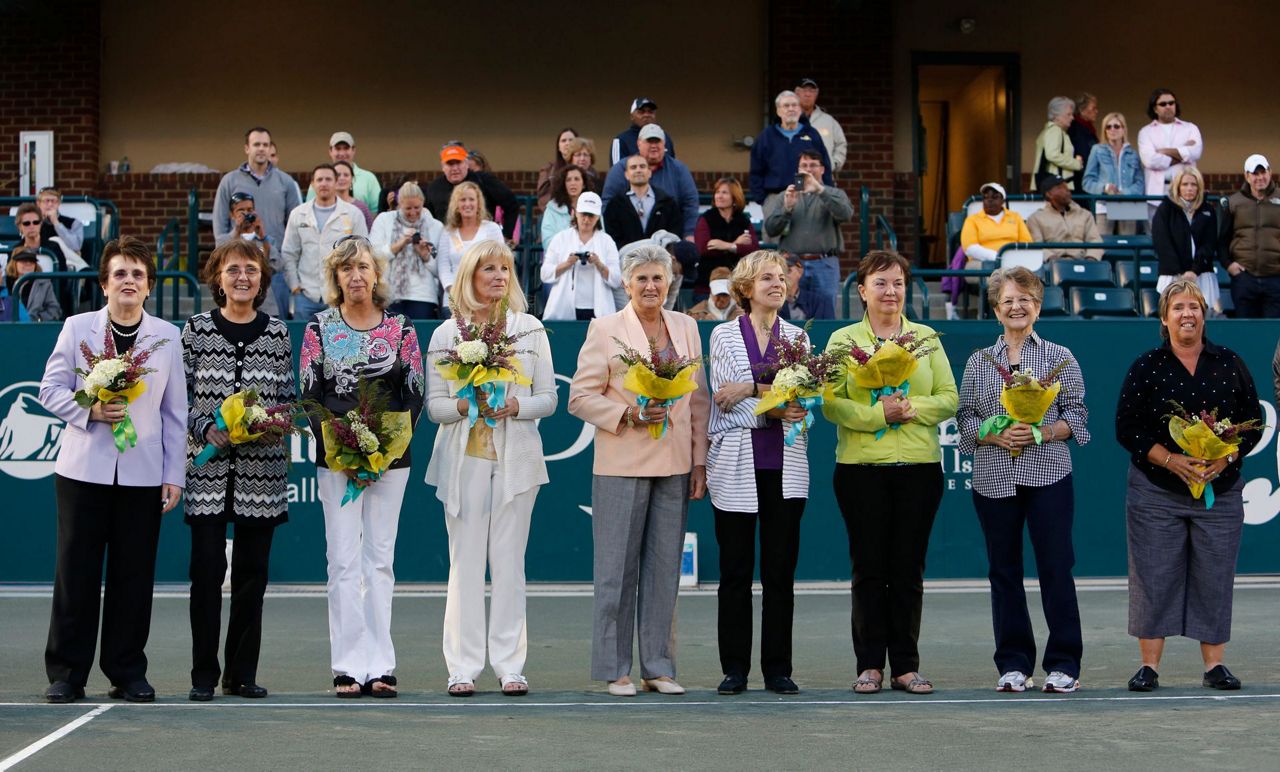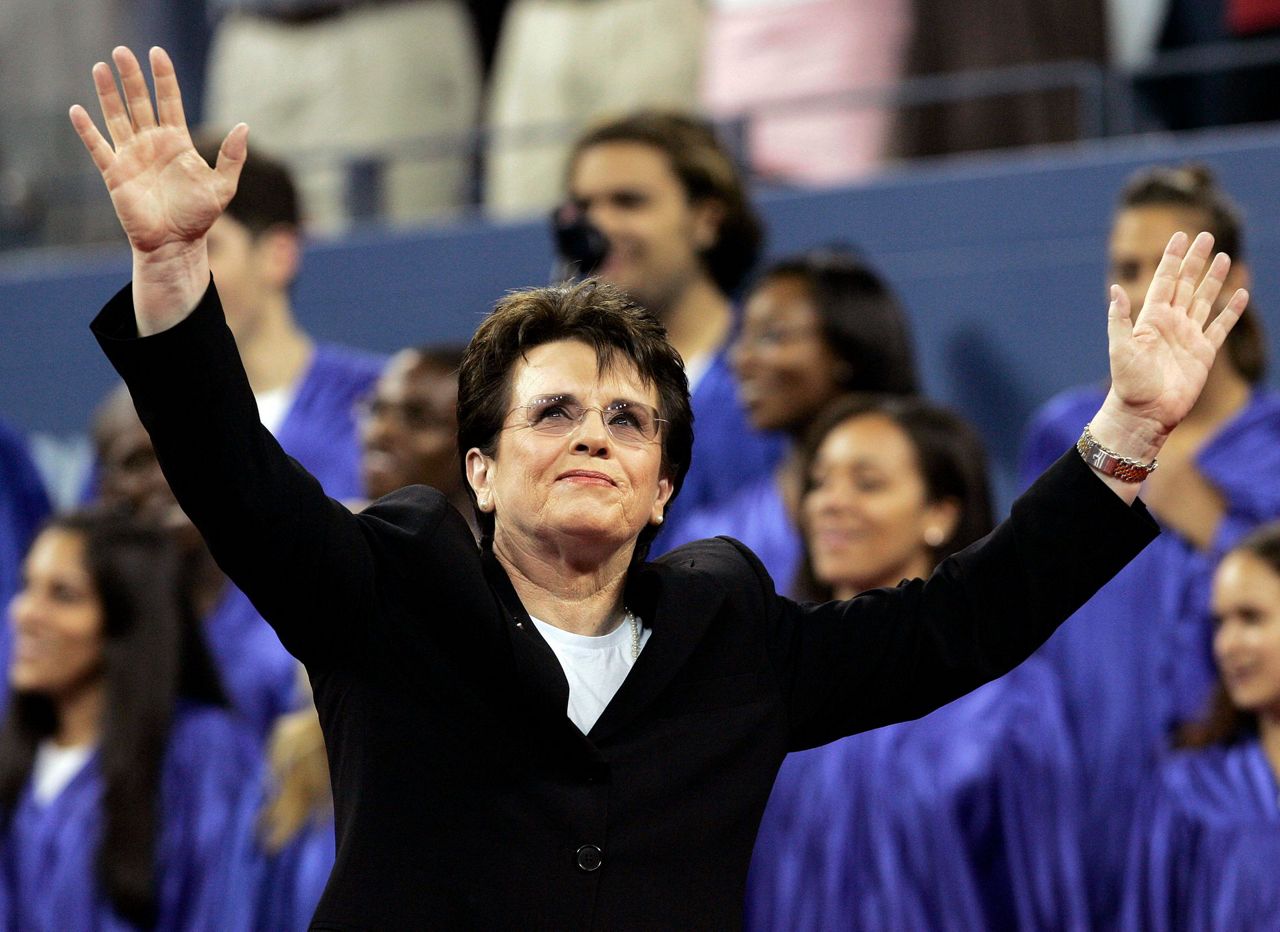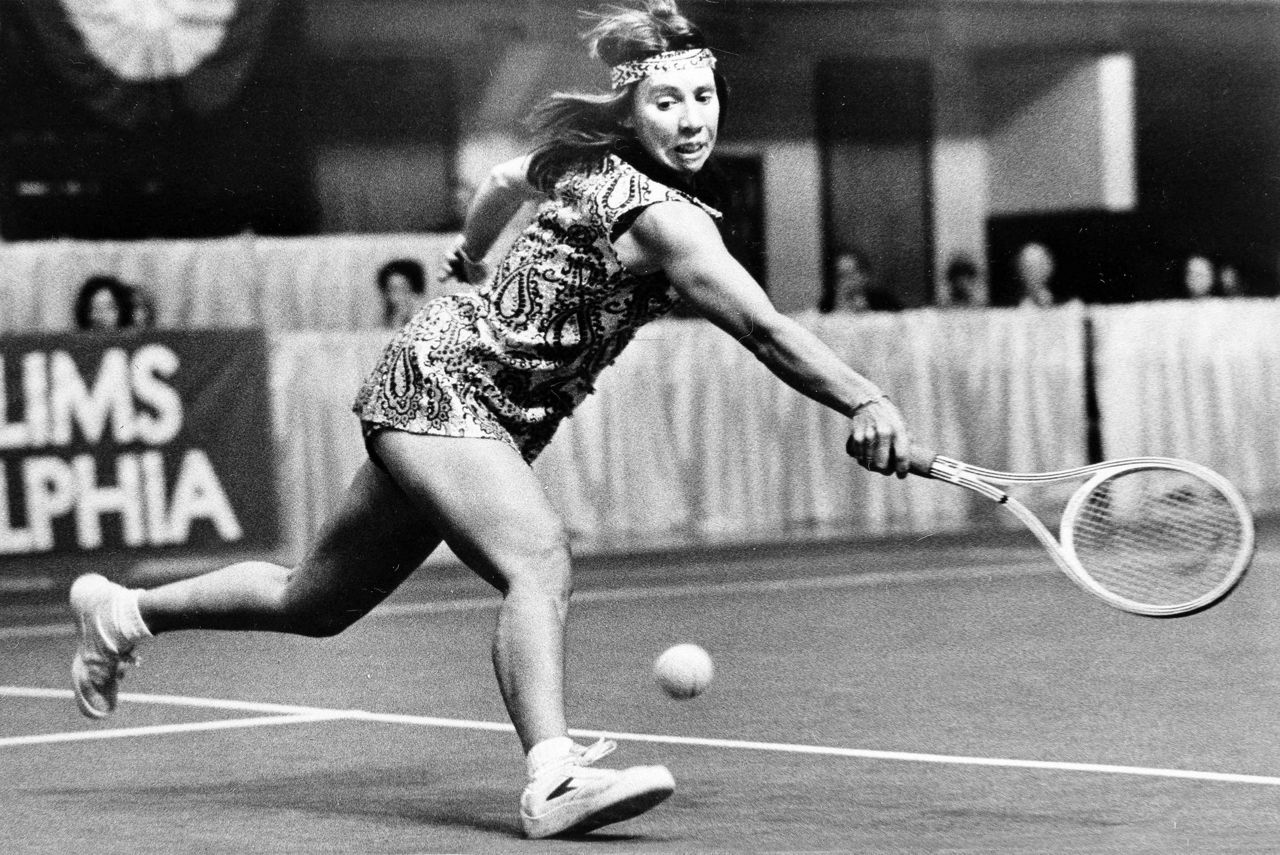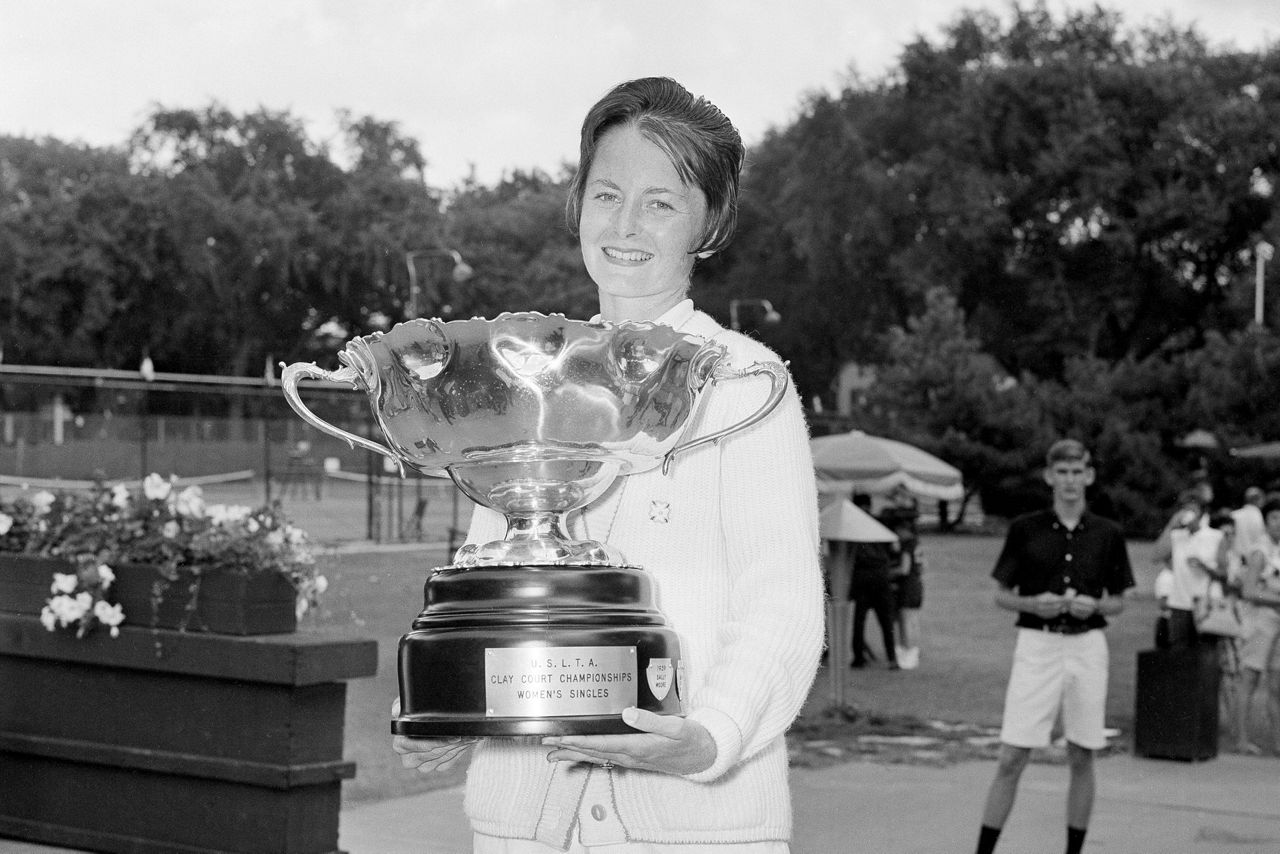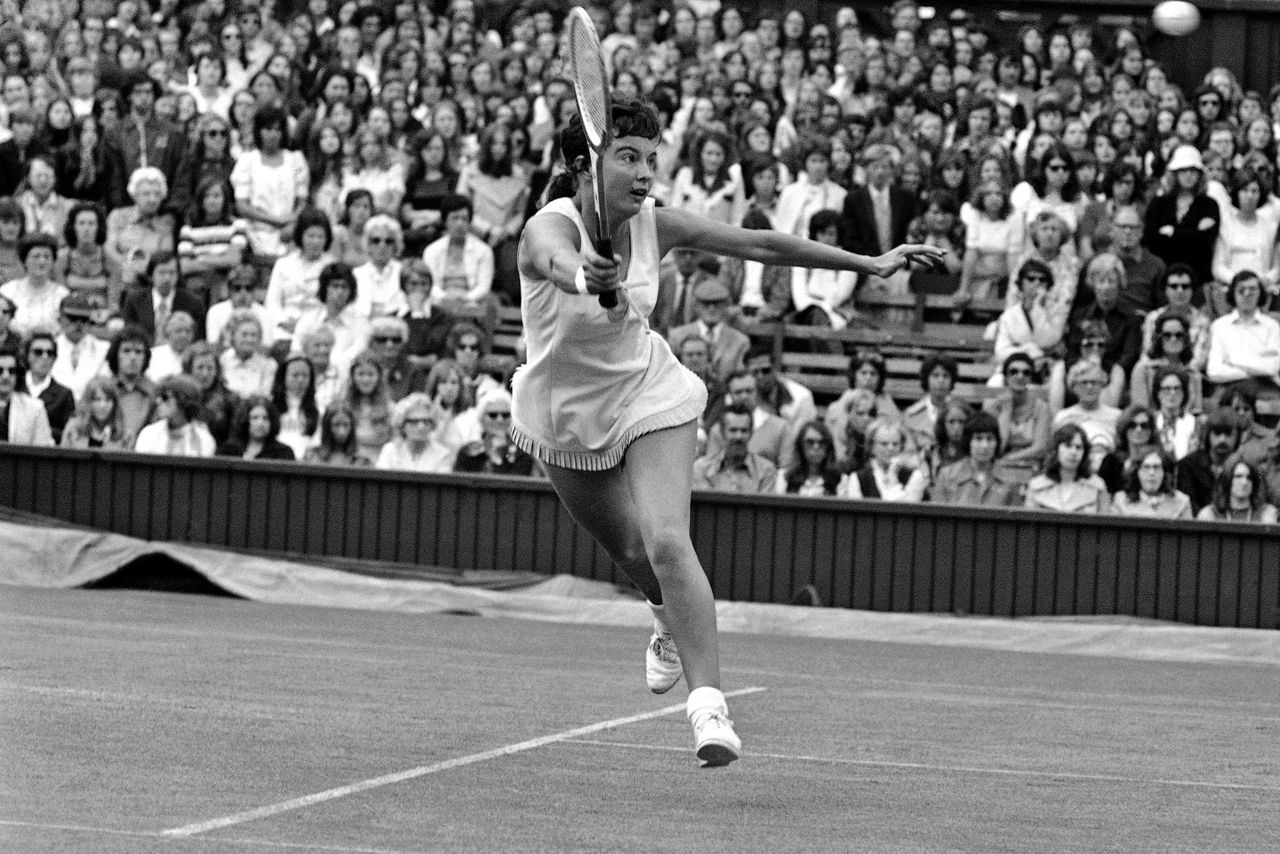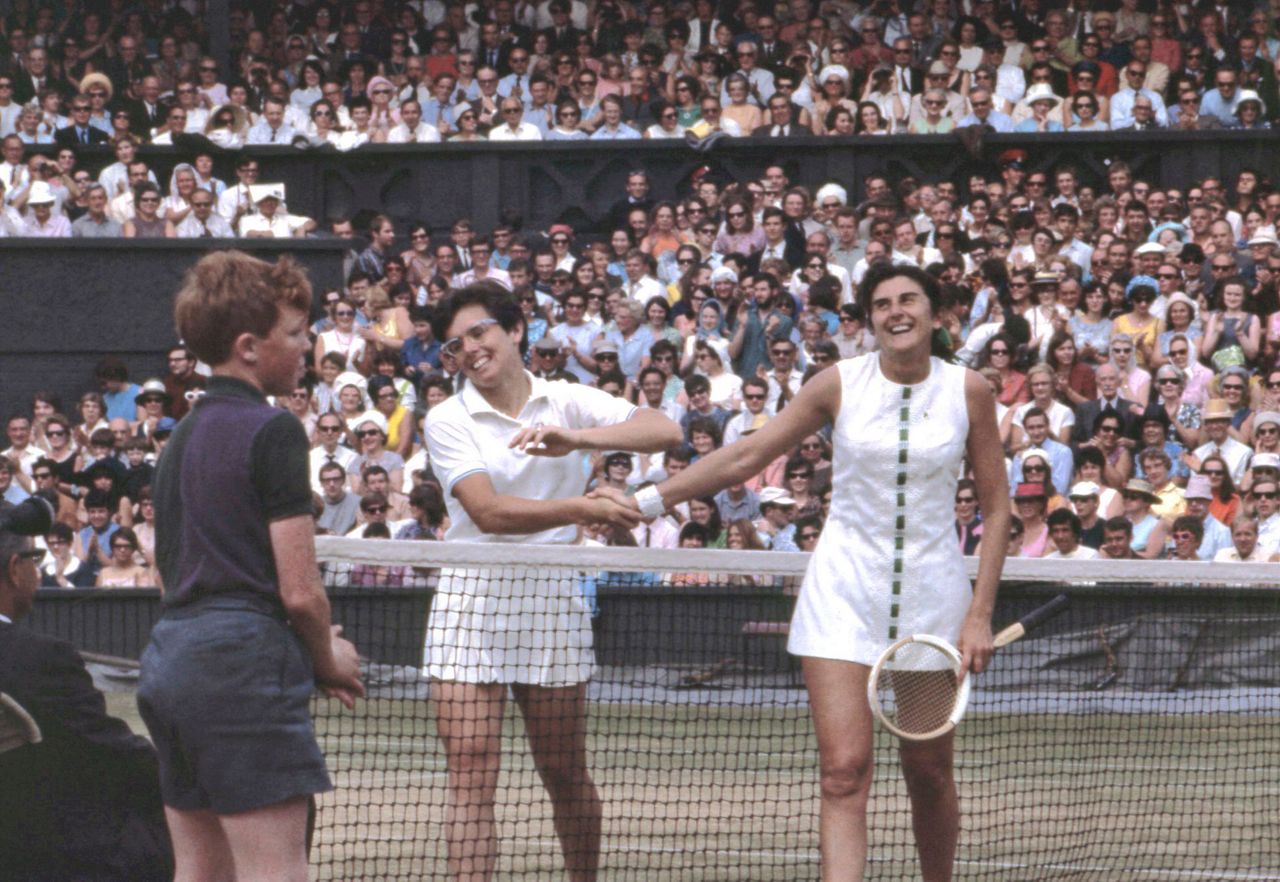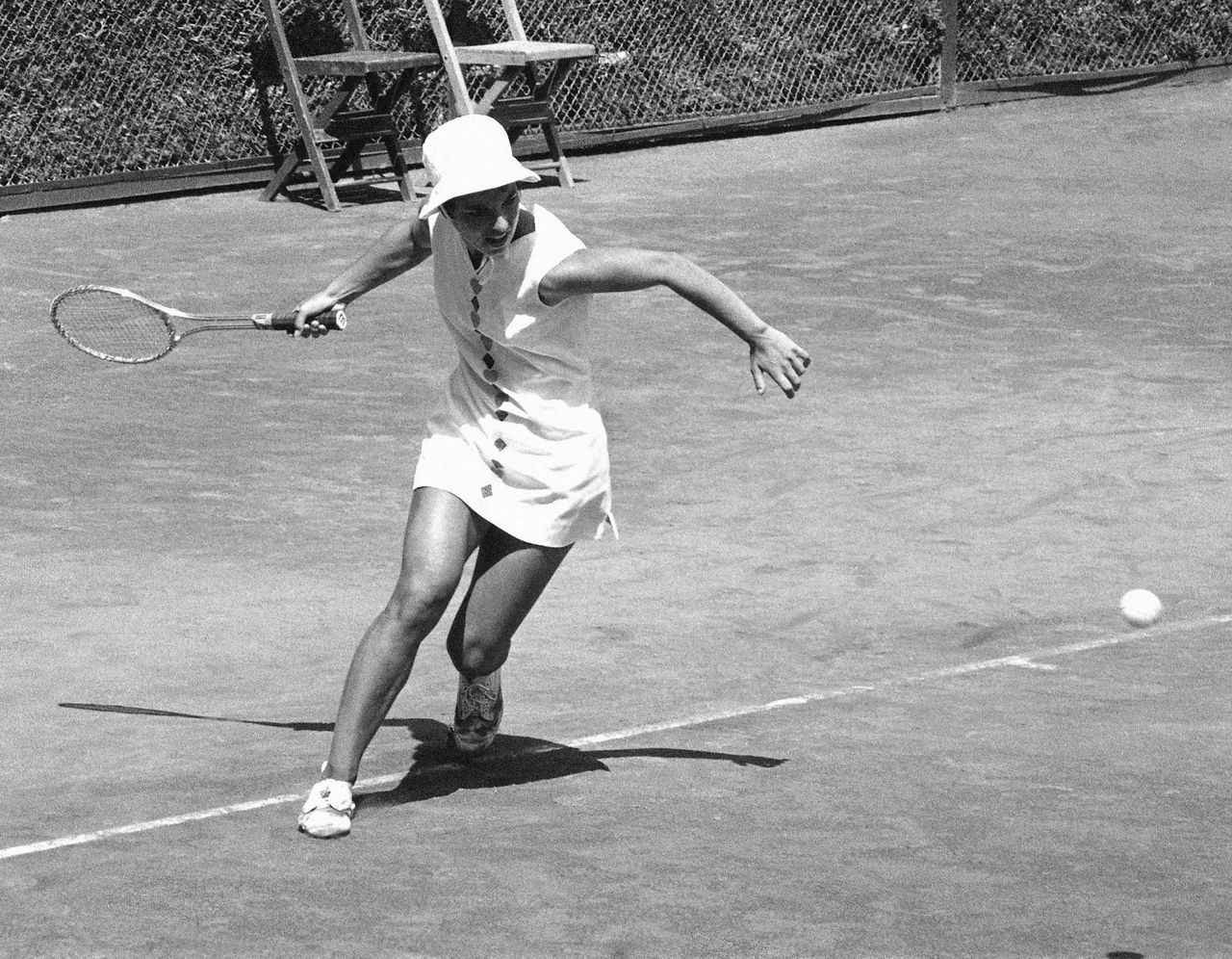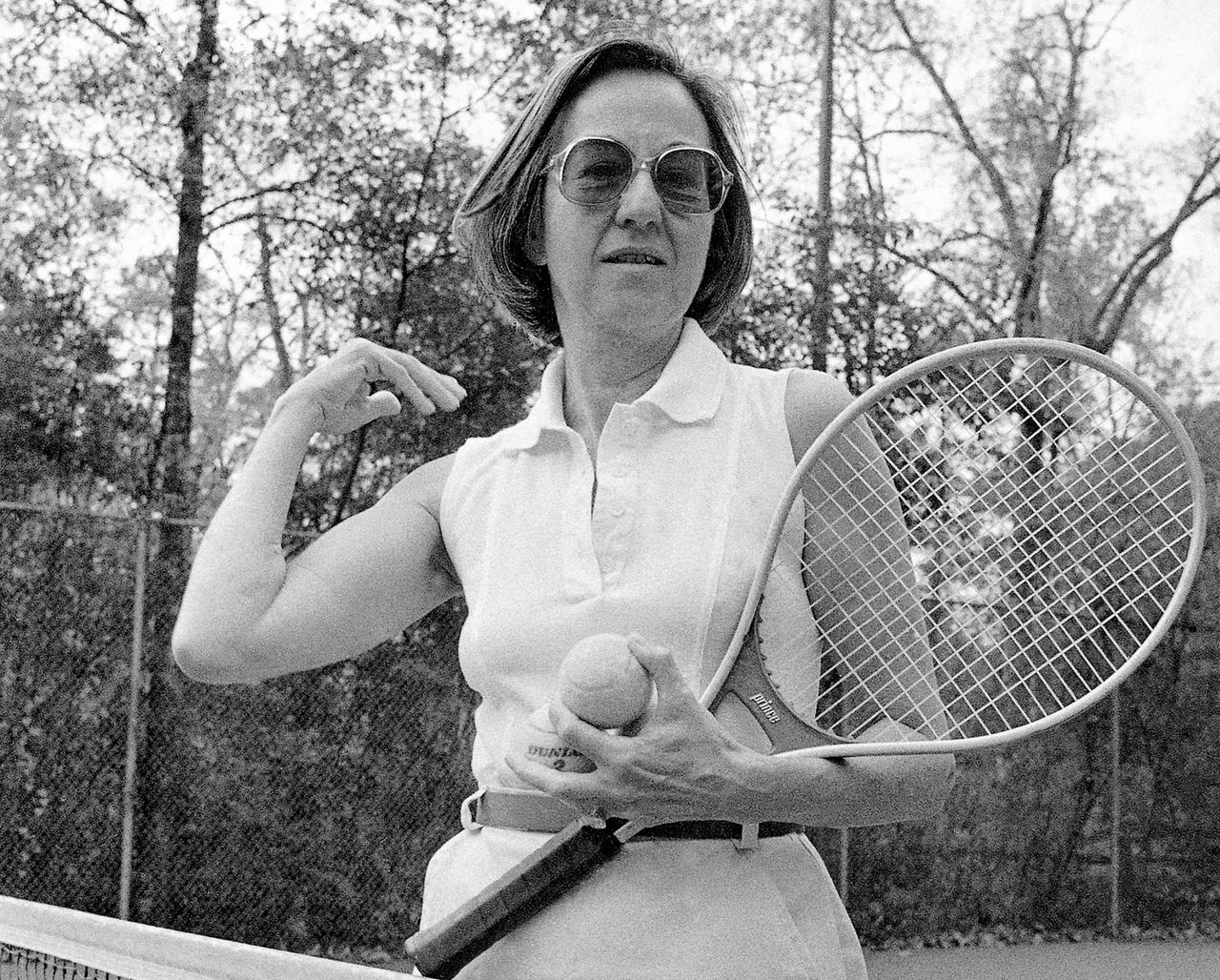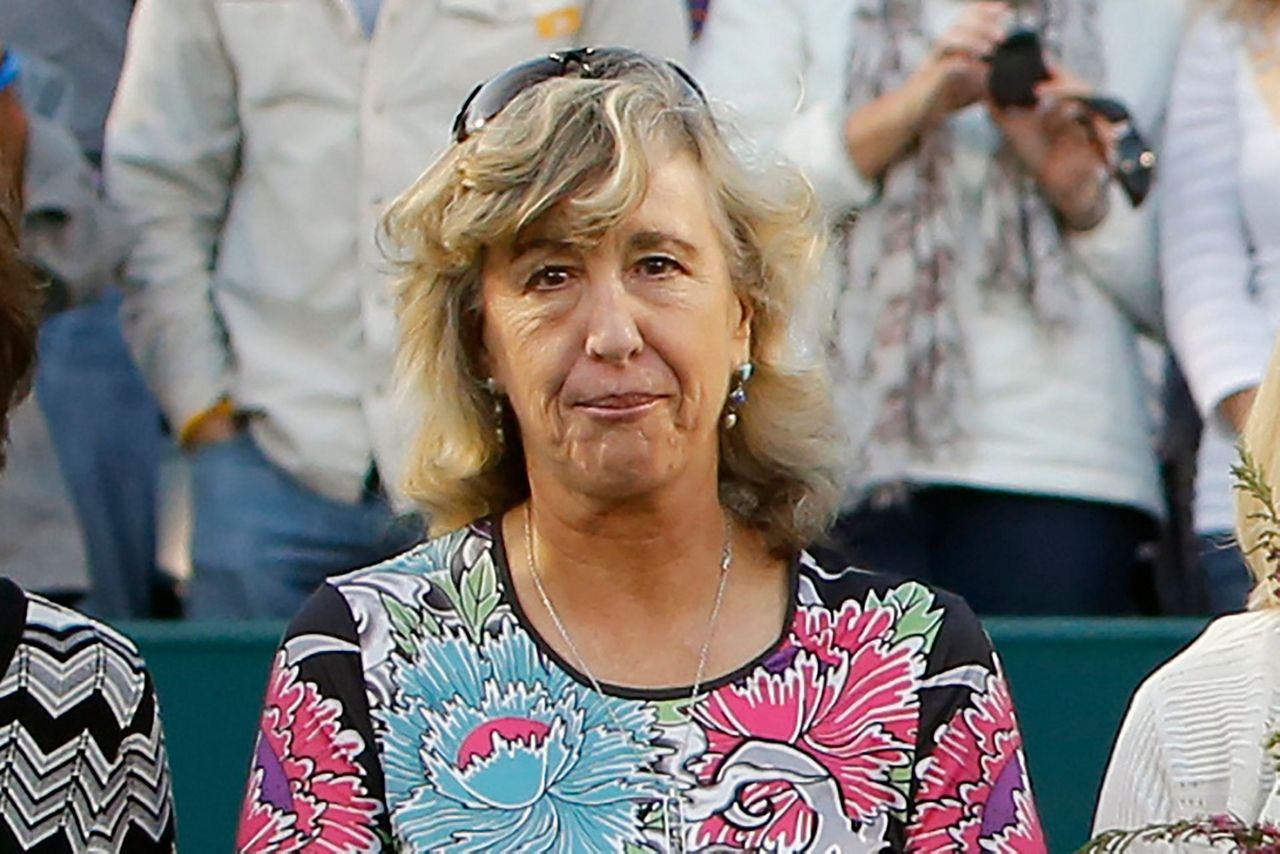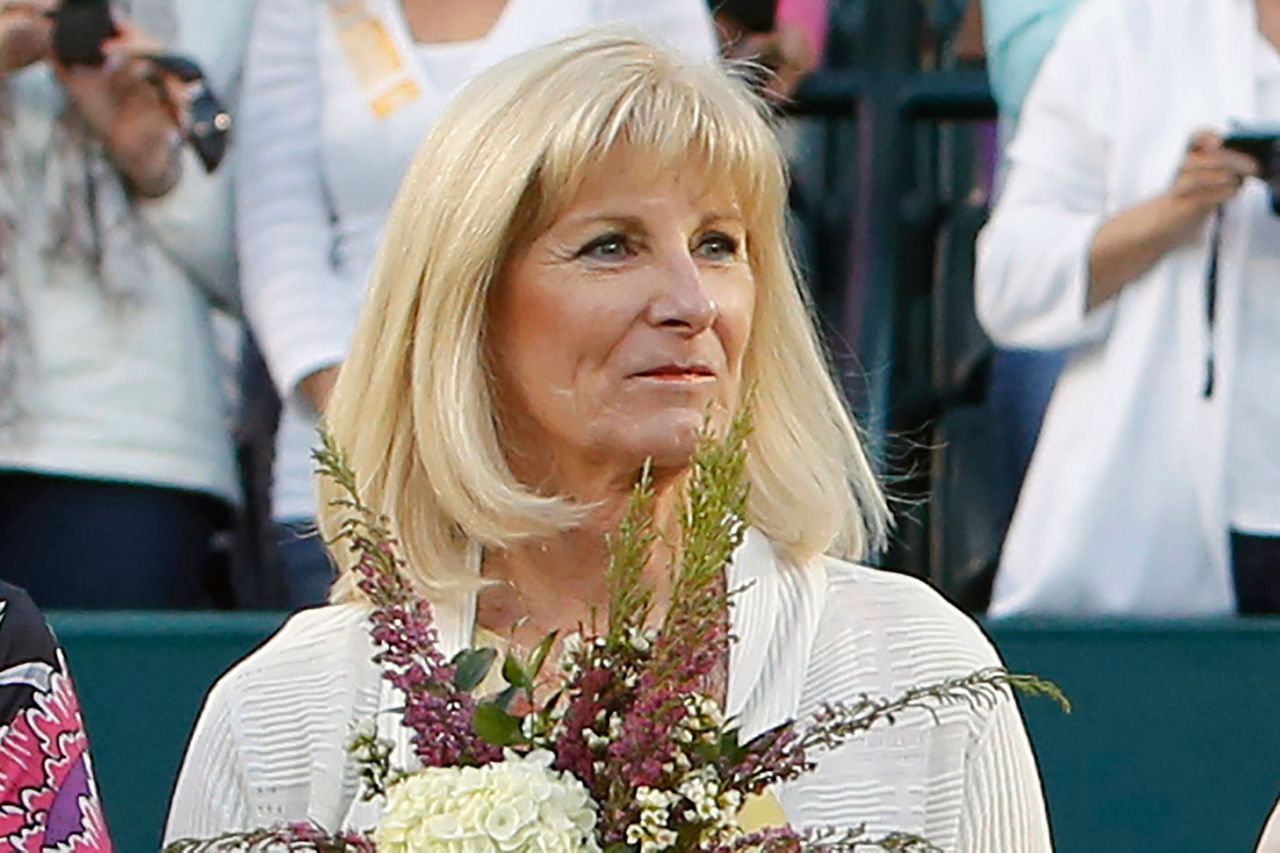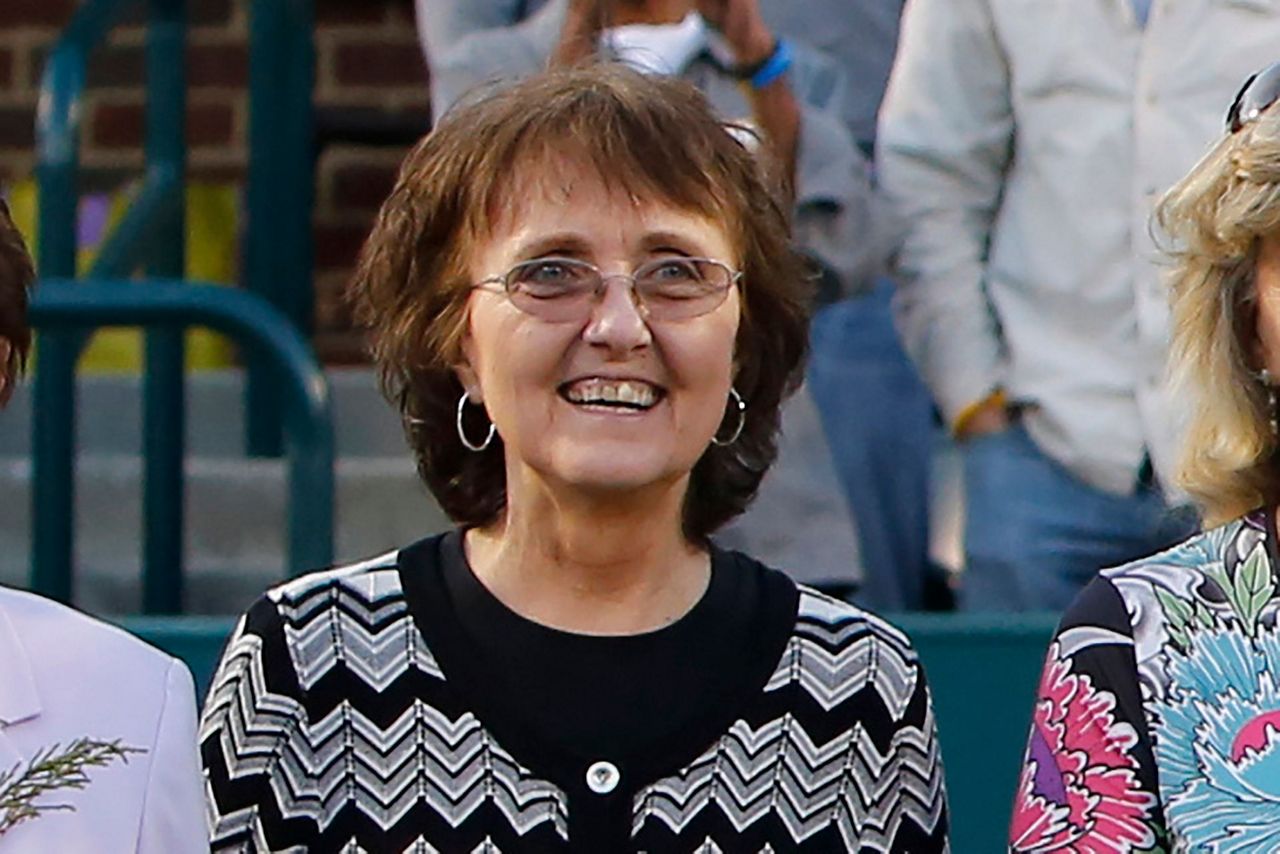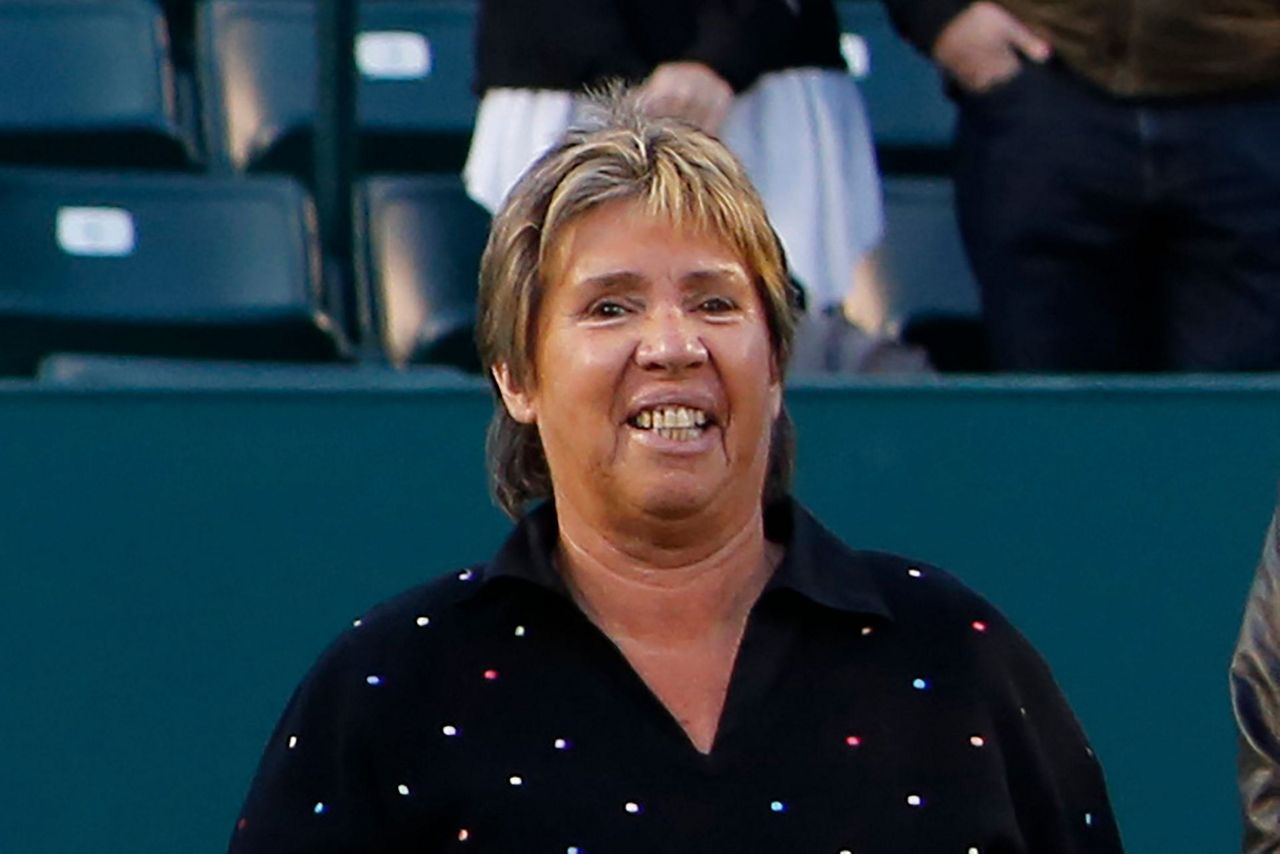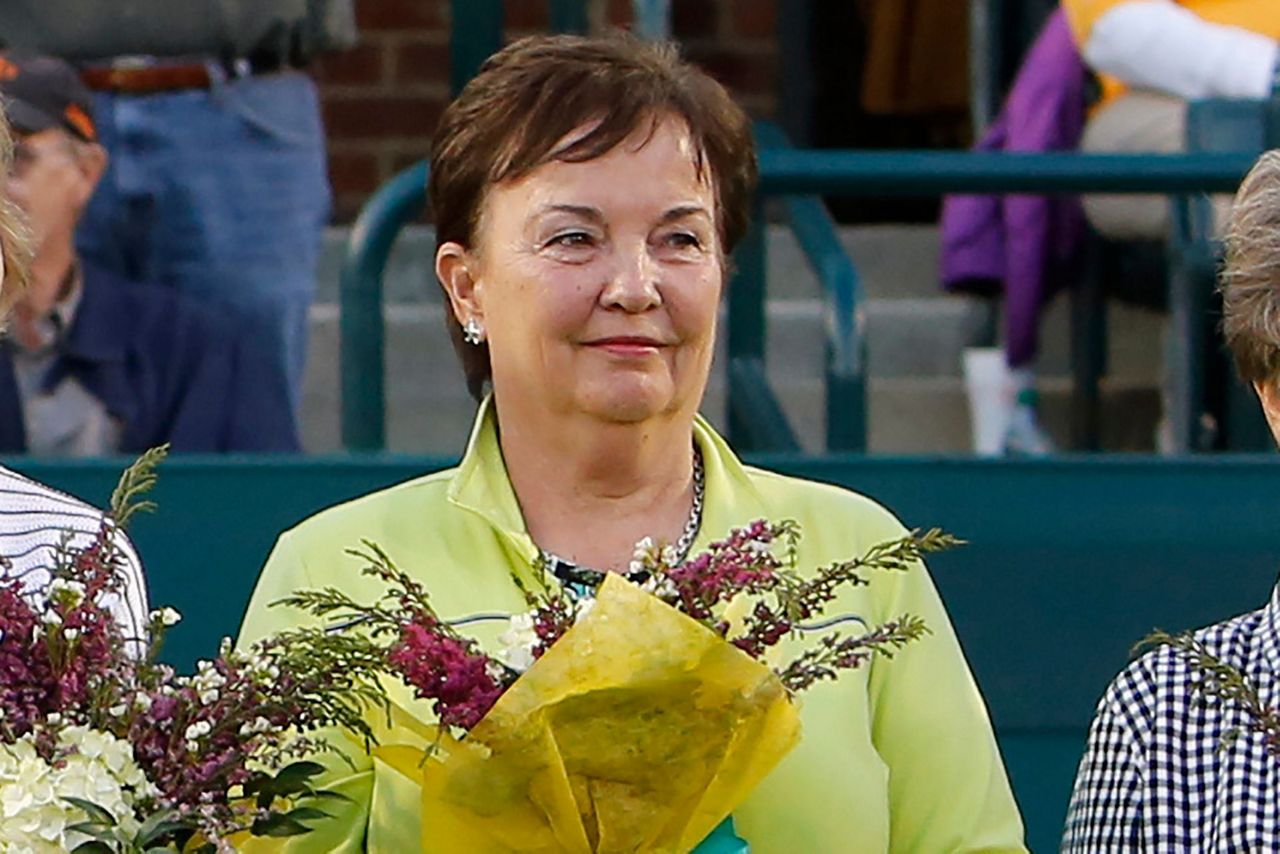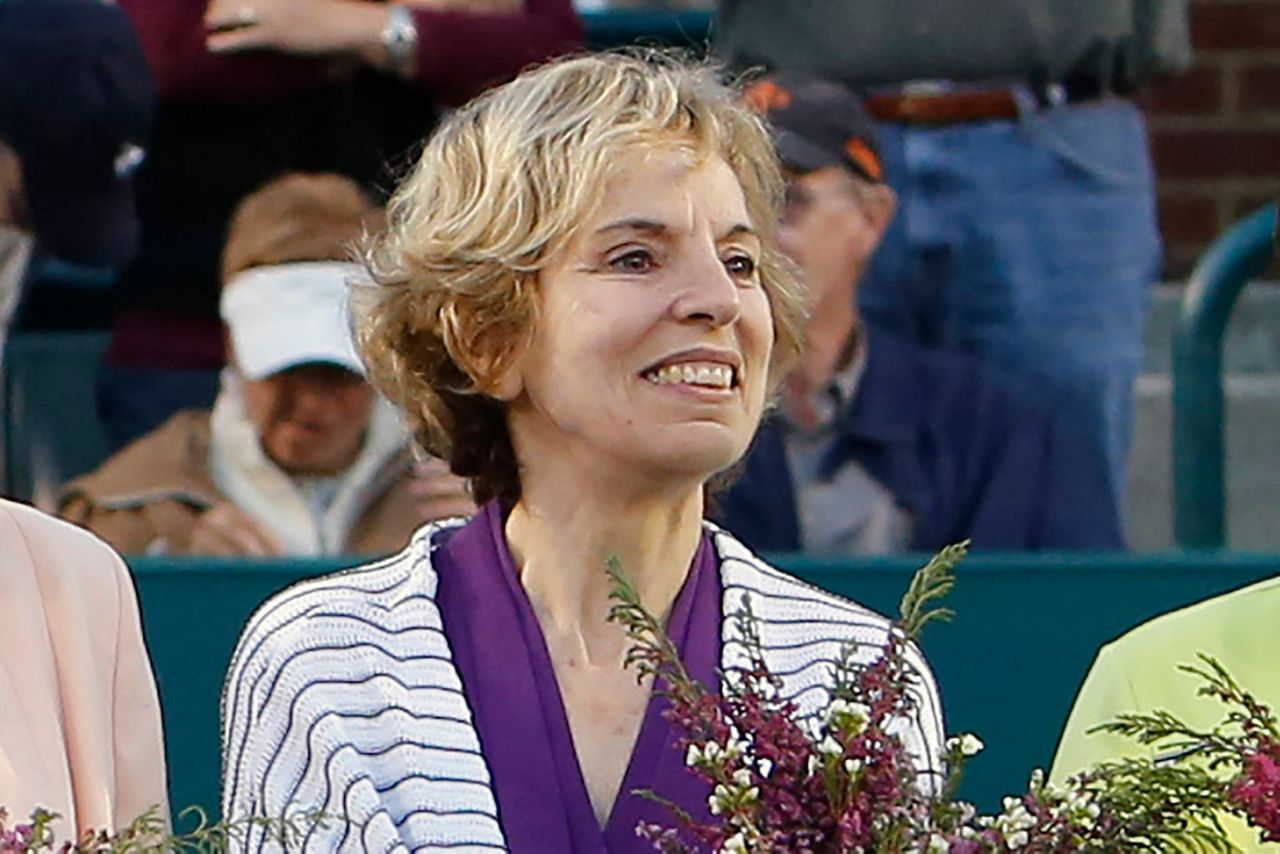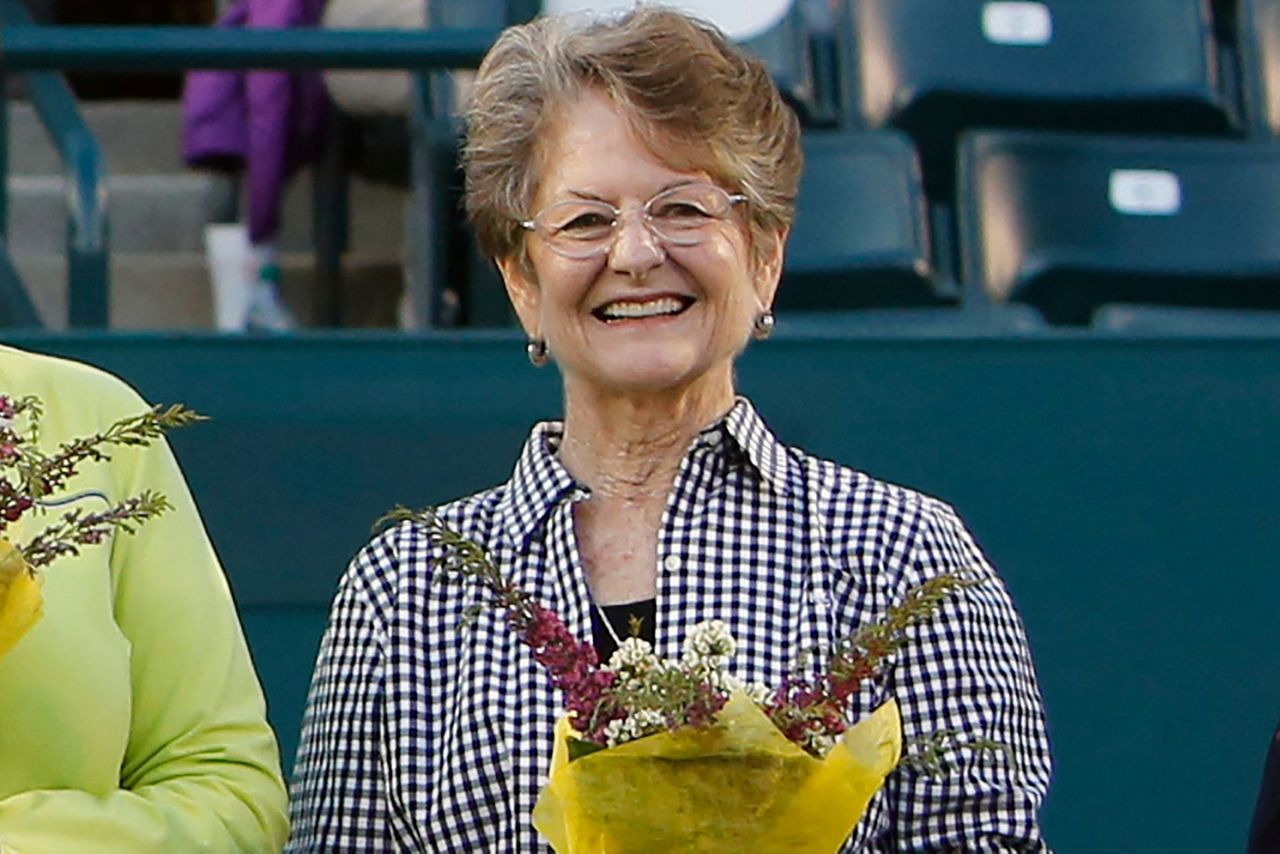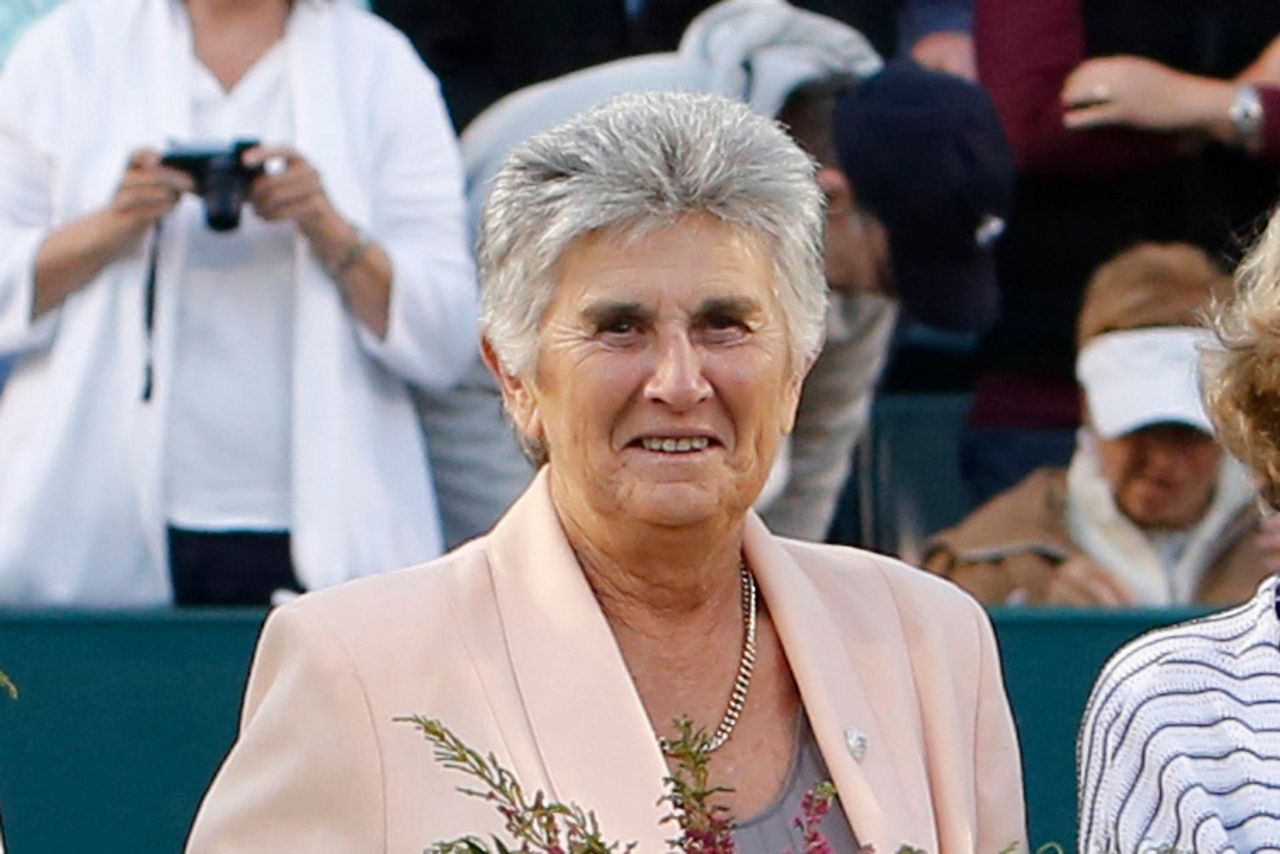NEW YORK (AP) — Billie Jean King and eight other women of the “Original 9” are celebrating the 50th anniversary of signing $1 contracts and breaking away from the U.S. tennis establishment to form the Virginia Slims circuit in 1970. It helped launch the WTA Tour, which now offers millions in global prize money.
Promoters were offering fewer tournaments and substantially less prize money for the women. They were galvanized when former player and promoter Jack Kramer announced the Pacific Southwest Open in Los Angeles would pay $12,500 to the men's champion and $1,500 to the women's champion.
So they signed with promoter Gladys Heldman to play a tournament in Houston on Sept. 23, 1970, despite a threat from the U.S. Lawn Tennis Association (now the USTA) to ban them from Grand Slam events and international competition.
The Original 9 will gather by Zoom to celebrate the inaugural Virginia Slims event. The WTA Tour they helped create offered 55 events in 29 countries and a total of $179 million in prize money in 2019.
This week, the Original 9 were nominated for induction into the International Tennis Hall of Fame. The women received diamond pins from the WTA, which will hand out a Courage Award in their honor.
Here's a look at the women who, in their 20s, took a stand against inequality in their sport.
KRISTY PIGEON:
The youngest of the nine, a 20-year-old Pigeon attended Mills College and later transferred to UC Berkeley. She “loved being a rebel” and had “no reservations” moving ahead with the plan despite the consequences.
Heldman asked her to write a letter to Philip Morris CEO Joe Cullman in New York to request sponsorship because “she had confidence that I could accurately state our cause and attract his interest.”
She spelled out the inequities among the men’s and women’s tournaments, saying the women’s matches were just as entertaining and deserving of equal prize money. Pigeon suggested the company would benefit from advertising with the nascent women’s tennis circuit, ending the letter with “Joe, show us some dough!”
She called Heldman a “brilliant and progressive” tennis innovator who wanted the women to succeed. The leader of the pack, “Billie was a bulldog” and facilitated discussion groups with the women on how to proceed.
Pigeon won the Junior Wimbledon title in 1968, which started a four-tournament winning streak. It included the Welsh Open Women’s Championship, the U.S. Eastern Women’s Grass Court Championship and the U.S. Girls Championship.
“People don’t know how trying it was to be a teenage female athlete with little or no approval from the male sex during the late 60’s, including one’s father,” Pigeon said. “What works is proving through ability and demonstration that women, on the scale of things, are equal to men in contributing to society.”
After earning a graduate degree in biology, Pigeon started Sagebrush Equine Training Center for the Handicapped in Sun Valley, Idaho. Her current passions include Nordic skiing and working on wildlife restoration projects
___
VALERIE ZIEGENFUSS
A 21-year-old Ziegenfuss attended San Diego State College and consulted with her father, George, about joining the Virginia Slims circuit. He was her first tennis coach and the men’s basketball coach there.
“I said, ‘What about this? It means not going back to college.’ He said, ‘Valerie you love tennis, so do it. You can always go to college.’”
That encouragement and support was lacking from the U.S. tennis leadership.
“Tennis was run by men, the good ’ol boys club,” Ziegenfuss said. “Our tennis tour was dominated by male promoters who didn’t really believe in women’s tennis.”
That quickly changed under Heldman and the deep pockets of tobacco giant Philip Morris. The first full season in 1971 featured 19 tournaments in various cities across the U.S. and $309,000 in total prize money.
“Virginia Slims spent as much money on marketing as they did on prize money,” Ziegenfuss said.
She called it “perfect timing” when tobacco ads were banned on TV in 1971, making a budget available for Philip Morris to sponsor the women's tennis circuit. It used the Virginia Slims slogan “You’ve come a long way, baby.”
Philip Morris already had experience promoting tennis, when Marlboro sponsored the 1968 U.S. Open. Five weeks before a tournament, some players would arrive in the city and hold a press conference. Players gave away tickets at grocery stores and racquets at tournaments. There were tennis clinics with club members, cocktail parties and press obligations, usually featuring King.
“Billie Jean was a great leader, a wonderful player, she had vision,” Ziegenfuss said. “She was a giver, what an athlete, what a champion."
Ziegenfuss, who was ranked No. 1 in doubles and won six titles, became a teaching pro and spent five years as a USTA national coach. Her daughter, Allison Bradshaw, played three years on the WTA Tour.
___
JANE ‘PEACHES’ BARTKOWICZ
The 21-year-old Bartkowicz was a tennis prodigy. She won 17 junior titles between the ages of 11-18, including the 1964 girls singles at Wimbledon.
She earned her nickname on the public courts in Hamtramck, Michigan, where she honed her peachy shot against a wall. At 11, she won the 1960 U.S. Lawn Tennis Association singles and doubles titles in her age group.
Known for her two-fisted backhand, she defeated top players from 1968-70, including Virginia Wade, Rosie Casals, Margaret Court, Evonne Goolagong and Kerry Melville.
Bartkowicz won gold at the l968 Mexico City Olympics when tennis was a demonstration sport and had an undefeated record in helping the U.S. to victory at the Federation and Wightman Cups.
In 1970, she played 22 tournaments and 64 matches. Bartkowicz competed in fewer tournaments in 1971 before heading to school at Wayne State in Detroit.
She retired at 25 and became a tennis instructor. Bartkowicz, who had a bone marrow transplant a few years ago, says she’s impressed by the play of U.S. Open champion Naomi Osaka.
___
ROSIE CASALS
A 22-year-old Casals won the first Virginia Slims Invitational at the Houston Racquet Club, defeating Judy Tegart Dalton of Australia 5-7, 6-1, 7-5 on Sept. 26, 1970.
A 5-foot-2 dynamo on the court, Casals “ran, jumped, bounced and twirled, hit side spin and top spin, low balls and high balls,” according to an AP story about the tournament.
Nicknamed “The General,” Casals helped King rally the women around the effort to start the Virginia Slims circuit and the WTA Tour in 1973.
Casals, whose parents were from El Salvador, grew up in San Francisco and played on the public courts of Golden Gate Park. As a teenager, she met Billie Jean Moffitt – a product of the Long Beach public parks – and they teamed for success in doubles.
Casals won 12 Grand Slam doubles titles, the majority with King. “I was the leader sometimes to keep her calm when she lost her temper. She was the leader when she said ‘Hey, we’re going to win this.’ We believed in one another.”
Casals won a record 112 doubles titles in her career, half with King. At 39, she won her last title with Martina Navratilova, who eventually surpassed her with 177 doubles titles. Casals was inducted into the International Tennis Hall of Fame in 1996.
Court, who won a record 24 Grand Slam singles titles, didn’t initially join the renegade Virginia Slims circuit. Casals said: “Margaret was about Margaret. Billie Jean was about the tour.”
After her tennis career, Casals started Sportswomen, a sports marketing company. In 2015, she co-created the Love and Love Tennis Foundation to introduce the game to Hispanic youths in East Coachella Valley, California.
Casals isn’t keen on recent talk of merging the WTA with the men’s ATP Tour, seeing no reason to “change something that works.”
She’s grateful the WTA provides medical insurance for former players. However, Casals calls it “an insult” the Original 9 and other women who played regularly from 1970-1990, before the WTA pension plan began in 1990, only receive $5,000 each from a WTA Legacy Fund set up in 2019.
___
KERRY MELVILLE REID
The 23-year-old Melville soon realized the consequences of signing a contract and holding up the $1 bill. She and her Australian colleague Judy Tegart Dalton were banned the next season from tournaments in Australia.
A few years later, Reid won the 1977 Australian Open singles title in front of a raucous crowd and friends and family. But women’s tennis struggled before the Virginia Slims circuit.
“Worst was the prize money inequity and no tournaments to play in and no press exposure at all,” Reid said. “It was a pretty dismal situation as no one seemed to care too much about us, so we set out to change things."
There was a small crowd at the Houston tournament, but the matches were “very entertaining” and received a “very positive response from the crowd.” She says with each tournament, the crowds grew and “gradually more of the top players joined us.”
Reid went on to win the 1978 Wimbledon doubles title, ranked in the Top 10 for 12 years and was inducted into the Australian Tennis Hall of Fame in 2014. She was a teaching pro at Hilton Head, South Carolina.
Her advice to today’s players: “Give back and be role models.”
___
JULIE HELDMAN
The 24-year-old daughter of tennis promoter Gladys Heldman, Julie reached No. 5 in the world. The Stanford graduate won the 1969 Italian Open, beat the top-ranked Court and upset defending champion King in the early rounds at the 1973 U.S. Open.
Julie was among the first females to commentate a men’s tennis match, during the 1976 Avis Challenge Cup in Hawaii with Bud Collins. Her recent memoir “Driven, A Daughter’s Odyssey” chronicles the early days of the tour.
Heldman considered her mother, King and family friend Cullman the “holy trinity” of tennis. Her mother’s connections as owner and publisher of World Tennis magazine, plus the “charismatic star” King and corporate sponsorship from Philip Morris proved pivotal.
Heldman says on the eve of the inaugural Virginia Slims tournament, players were called by a USLTA official and threatened with suspension.
The next day, Gladys met with the players and offered protection by signing a $1 contract with World Tennis magazine. “They would be untouchable by the USLTA, and the Houston Racquet Club would also be protected. Mom also announced that Virginia Slims would be the sponsor.”
Some top international players — Court, Wade and Goolagong -- didn’t want to risk suspension from their tennis associations by joining the Virginia Slims circuit. Instead, they played in the USLTA’s rival circuit. But the groups eventually merged in 1973, creating the WTA Tour.
“Women players from around the world eagerly joined the tour, thrilled to be making money. I am extremely proud of our contributions.”
___
BILLIE JEAN KING
The 26-year-old King led the charge for equal pay and opportunity in women's tennis. She and the other eight players worked tirelessly to promote the tour in its first full season.
King and Casals played more than 200 singles and doubles matches in 1971, participating in pro-ams and kids’ clinics. King says the Original 9 wanted a woman anywhere in the world to have the opportunity to compete, earn recognition for her accomplishments and make a living playing tennis.
King became the first female athlete to earn $100,000 in 1971 and got a congratulatory call from President Richard Nixon. At this year’s U.S. Open, players earned $100,000 for losing in the second round.
The USTA Billie Jean King National Tennis Center hosts the U.S. Open. It was named for her in 2006, honoring the winner of 39 Grand Slam titles in singles, doubles and mixed doubles. Last week the International Tennis Federation announced the Fed Cup would be called the Billie Jean King Cup.
The Women's Sports Foundation she created in 1974 still offers grants to young athletes. The more recent Billie Jean King Leadership Initiative focuses on inclusive workplaces.
King's generation came of age during the civil rights, women’s rights, and anti-war movements. She's pleased current athletes are taking a stand for equality and social justice.
“The younger generation is doing the right thing,” King said. “It’s our job to help them and get out of the way.”
___
NANCY RICHEY
The 28-year-old Texan had already won the 1967 Australian Open and 1968 French Open and four Grand Slam doubles titles by the time she joined the Virginia Slims circuit.
While at the 1970 U.S. Open, the women talked about the paltry prize money Kramer was offering at his upcoming Los Angles tournament. Richey's father suggested she, King and Casals meet with Gladys Heldman at the West Side Tennis Club to consider their options.
An informal survey the players handed out to fans at the U.S. Open suggested more than 50% of men and 66% of women would pay to watch a women’s tournament. Most fans said they liked the women's style of play, which offered more variety and longer rallies.
Heldman quickly set up the $7,500-purse Virginia Slims Invitational in Houston for the same week as Kramer’s event.
Richey went on to win 69 singles titles during her career and helped the U.S. win the Federation Cup in 1969. She won the U.S. Women’s Clay Court Championships a record six consecutive years from 1963-68.
Inducted into the International Tennis Hall of Fame in 2003, Richey appreciates the serve-and-volley game of Taylor Townsend and the skills of newcomers Coco Gauff and Bianca Andreescu.
___
JUDY TEGART DALTON
The oldest at 32, Dalton finished runner-up to Casals in the first Virginia Slims event. She took home the most prize money ever and framed the $1 bill.
“It was history in the making,” Dalton says. “No one ever dreamed how the women’s tour would develop, but we always dreamed that prize money and respect for the women would be achieved to the highest level.”
The money she earned from the Houston final and tournaments in the early 1970s helped pay off a house in Melbourne. The Australian and U.S. tennis associations eventually ended their suspensions of the break-away players.
“There were many people against us, but thankfully we were all strong and stuck together,” Dalton says, “and Gladys led us well.”
Dalton, who won nine Grand Slam doubles titles, was inducted into the Australian Tennis Hall of Fame in 2013. She’s proud of the current No. 1 player, Ashleigh Barty of Australia, saying her “serve and touch are really top class.”
___
More AP tennis: https://apnews.com/apf-Tennis and https://twitter.com/AP_Sports
Copyright 2020 The Associated Press. All rights reserved. This material may not be published, broadcast, rewritten or redistributed without permission.



